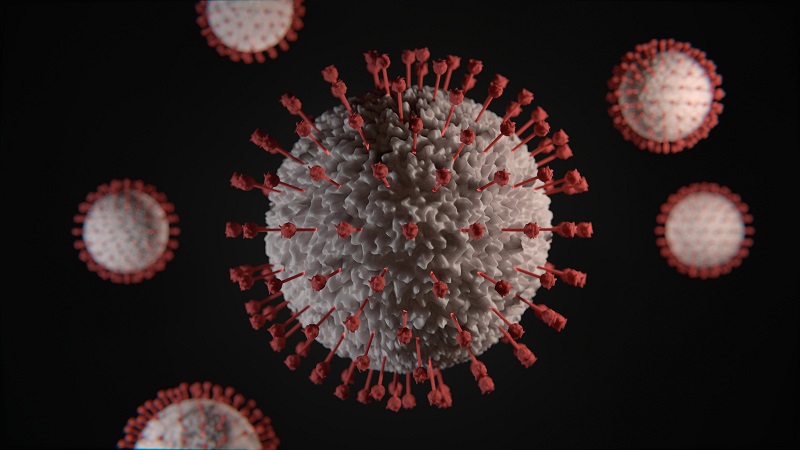Dynamic Light Scattering (DLS) for Protein Interaction Analysis

Introduction
Protein-protein interactions are fundamental to many biological processes, including cellular signaling, enzymatic reactions, and immune responses. Understanding these interactions is crucial for unraveling the mechanisms underlying cellular functions and developing targeted therapies for diseases. Over the years, several techniques have been developed to study protein interactions, and one such powerful method is Dynamic Light Scattering (DLS).
What is DLS?
DLS is a biophysical technique that allows the analysis of protein interactions in solution. It is based on the principle of light scattering, which refers to the scattering of light by particles in a solution. The underlying concept of DLS is that when proteins interact with each other, their size and shape change, leading to alterations in the scattering pattern of light.
The DLS technique involves shining a laser beam onto a sample containing proteins of interest. The scattered light is then collected and analyzed to determine the size distribution of the particles in the solution. By monitoring changes in the size distribution over time, DLS can provide valuable information about protein interactions, including the formation of aggregates, the presence of oligomers, and the determination of binding affinities.
Advantages and Disadvantages of DLS
One of the key advantages of DLS is its ability to measure protein interactions in a label-free and non-invasive manner. Unlike other techniques that require the use of fluorescent or radioactive labels. DLS relies solely on the intrinsic properties of the proteins being studied. This is particularly important when studying delicate or membrane proteins. A any modifications or labeling can alter their behavior and affect the accuracy of the results.
DLS also offers a wide dynamic range, allowing the detection of both weak and strong interactions. The technique can measure protein sizes ranging from a few nanometers to several hundred nanometers, making it suitable for a wide range of protein systems. This versatility makes DLS a valuable tool for both basic research and drug discovery, where the identification and characterization of protein interactions are crucial steps.
In addition to its versatility, DLS is known for its high sensitivity and reproducibility. The technique can detect changes in protein interactions even at low concentrations, making it ideal for studying rare or transient interactions. Moreover, DLS requires only small sample volumes, typically in the microliter range, which is advantageous when working with limited or precious samples.
Despite its numerous advantages, DLS does have some limitations. The technique assumes that the particles in the solution are spherical and monodisperse, which may not always be the case for protein complexes. Additionally, DLS is sensitive to changes in solution conditions. such as pH and temperature, which can affect the scattering pattern of light. Careful experimental design and data analysis are necessary to ensure accurate and reliable results.
Applications of DLS
DLS has found applications in various fields of research, including structural biology, drug discovery, and protein engineering. In structural biology, DLS can be used to determine the size and shape of protein complexes, providing valuable insights into their structure-function relationships. Drug discovery, DLS can aid in the identification and optimization of lead compounds by assessing their effects on protein size and aggregation. In protein engineering, DLS can be used to screen and optimize protein variants with improved stability and solubility.
Conclusion
In conclusion, Dynamic Light Scattering (DLS) is a powerful technique for studying protein interactions. Its label-free nature, wide dynamic range, high sensitivity, and reproducibility make it a valuable tool in various fields of research. By providing information about protein size, shape, and aggregation. DLS contributes to our understanding of protein function and aids in the development of new therapies. As technology continues to advance, DLS is likely to play an increasingly important role in unraveling the complexities of protein interactions and their implications in health and disease.
Source from Profacgen
Profacgen is a state-of-the-art protein service provider located in Long Island, NY, USA. We provide custom protein services in the biological sciences, enabling access to the latest tools, techniques. And expertise with competitive pricing and rapid turnaround time. We serve a broad spectrum of industrial and academic clients with a commitment to delivering high-quality data and customer services.
Protein expression and purification is where we started our business.
Profacgen provide a wide range of expression systems from procaryotic cells to eukaryotic cells to cell free and animal free systems, from transient expression to stable expression. We produce recombinant proteins according to our customer specifications or by developing customized protocols in house.
We also provide bioprocess scale-up services. Our fermentation laboratories are equipped with advanced bioreactors that enable us to produce protein at large scale. Our customers can choose to enter the protein expression pipeline at any stage.
Profacgen is also equipped with a professional team focusing on protein interaction analysis. We have acquired extensive experience and expert knowledge in protein interaction assays. We provide a comprehensive list of assays from initial screening (Y2H screening; Pull-down couple with MS analysis) to interaction validation (Co-IP, FRET etc.) to affinity and binding kinetics study (SPR analysis).





